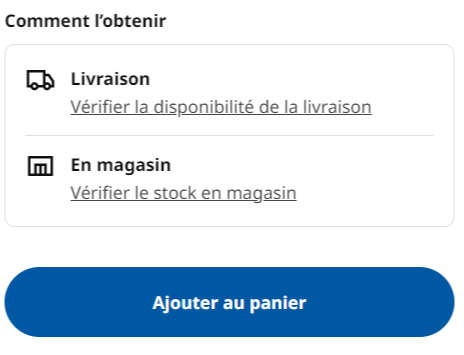Previously, shopping was a time-consuming and tiring process. You had to scour dozens of stores to find the perfect outfit and pay a premium.
Thanks to the advent of e-commerce, you can browse stores worldwide and get anything shipped home—all with the click of a button. E-commerce stores are a result of the globalization wave and have fared extremely well.
In 2022, retail e-commerce sales rose to $5.7 trillion worldwide and are expected to reach $8.2 trillion by 2026. Companies like Amazon, IKEA, Alibaba, and more make billions in revenue annually. But consumer convenience isn’t the only factor that has encouraged growth. Digging a bit deeper, these companies offer each consumer a localized and personalized experience, irrespective of location.
Localizing for international markets helps you tap into global audiences without needing physical stores. But what does it take to ensure that your entire store is optimized for each locale? Moreover, how can you achieve the sales results you're looking for?
In this article, we’ll guide you through everything from getting started with localization to best practices to ensure international success.
Benefits of e-commerce localization
Moving away from a standardized experience to a localized experience can bode well for you and your business. Here are some of the benefits you can expect in the long term:
Build customer loyalty through personalization: A CSA report found that 65% of consumers prefer content in their language—even if it’s poor quality. By personalizing their experience, you show them you care. In turn, it builds trust and loyalty in your brand.
Increase your market share and revenue: By tailoring language, content, and products to a specific local market, you can establish strong ties with your international customers. As you're eating into your competitor's market, you increase your revenue, too.
Scale the company in a shorter period: Traditional brick-and-mortar stores take years, if not decades, to scale and expand in different markets. But with a global e-commerce store, you can achieve that in months. For example, Mensa, an Indian D2C startup, reached unicorn status in just six months in 2022.
Capitalize on region-specific opportunities: Irrespective of where your brand is based, you can capitalize on local holiday opportunities now. For example, if you own an e-commerce store in the United States but have a localized store in India, you can create seasonal and profitable campaigns for holidays like Diwali, Eid, and more.
Shorten the consumer buying cycle: If a potential customer is searching for a specific product and finds your localized site, they're likely to shop from you. The absence of cultural and language barriers reduces friction in the process.
Improve your search presence in different markets: Multilingual SEO (search engine optimization) is a key part of improving search presence after you localize your website/app. The process ensures that potential customers can find your website using search phrases in their language. Through this approach, Rover could reach two million customers in ten countries in eight languages.
Tap into a wealth of consumer behavior data: Once you localize your store, you’ll bring in more potential customers from your target region. You can gather vast amounts of region-specific data like purchasing behavior, demographics, and preferences.. Using this data, you can make data-driven offer personalization decisions which will eventually drive more customers from that region.
The right time to localize your e-commerce website
Deciding the right time to localize your store can be a daunting task. A good litmus test is whether you're considering international expansion.
Here are three aspects that positively indicate you should invest in this process:
You’re receiving website visitors from different regions: Review your user data from your e-commerce site. Are you noticing visitors from regions where you don’t have a customer base? If so, you may benefit from investing in this process. You can start by localizing your content and monitoring engagement.
There's existing market demand for your product: Let's say you're selling sustainable clothing. If a different market shows a growing trend toward such products, consider investing in them. You've already validated the demand, so now you can dive deeper into the sector.
You want to launch brick-and-mortar stores in other locations: You're observing growth in your business, and a new store could be a good investment. If you have the budget to set up a physical store, test the waters by launching a digital store first. If it works, you have more channels for distribution, which results in more revenue.
Elements to localize within your e-commerce store
Before starting the localization process, think about what you should localize first. Here are a few things you shouldn’t miss:
Domain
When it comes to domains, “.com” is one of the most familiar. Currently, 37% of websites share the .com domain, which acts as a marker for a global business.
However, many consumers prefer shopping from websites that have a local domain. It increases their trust in the brand and indicates that it's a safe e-commerce site to shop from.
Depending on the target audience and market, you can use any of these three domain structures:
Subdomains: It refers to the xx.company.com structure. It functions separately from the root website and requires its own server. For example, Smartling’s Spanish (Mexico) website uses this structure: https://es-mx.smartling.com/
Subfolders: It refers to the company.com/xx domain structure. It’s hosted on the original website and acts as a folder within it. For example, Shopify uses this structure for its Colombian website: https://www.shopify.com/co
Country-code top-level domain (TLD): It refers to the brand.xx domain structure. These are usually reserved for specific countries and might get prioritized for local geotargeted searches. For example, Amazon’s Australian website uses this domain structure: http://amazon.au/
Pricing
You can offer local currency options depending on the country or region. It ensures that customers don't spend time converting the currency and can focus on finishing their online-shopping experience. It reduces the rate of abandoned carts as 16% of people abandon their carts when they can’t see/calculate the total order value upfront.
Ryan Stewart, Managing Partner at WEBRIS Legal Marketing Agency, says, "Consider using regional pricing models to adjust prices according to the cost of living. This helps create a sense of value for customers from different countries looking to buy from you."

Skullcandy’s India website with localized pricing and payment options. Source
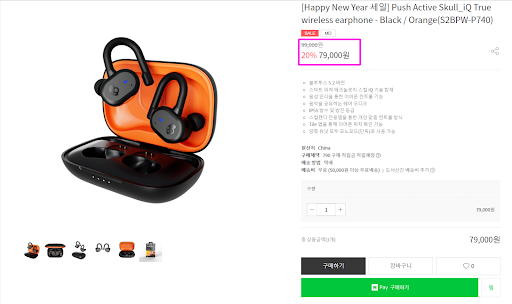
Skullcandy’s South Korean website with localized pricing and payment options. Source
Customer support
Customer service is a crucial part of a successful e-commerce business, and customers need to feel understood when they reach out with inquiries or problems.
According to Freddie Chatt, E-commerce SEO Consultant, there’s no point in launching in a new market but not offering local support.
You need to hire local staff for nuanced queries, and additionally, you can localize customer support materials, including the following:
- Shipping and returns
- Privacy notice
- Help center
- Payment information
- Contact page
- Multilingual chatbots
- Email support
- Terms and conditions
- Local phone-based support
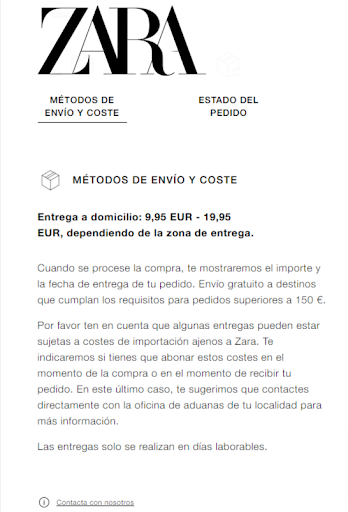
Zara’s Delivery Methods Page in Spanish (for a Jamaican audience). Source
Product descriptions and reviews
Localize your product descriptions and reviews to create a more optimized experience for customers in different countries. Localization helps you offer an accurate description of the product in the customer’s native language and ensures that there’s no room for misunderstanding.

Nike's Belgian store offers product descriptions in a Belgian dialect of German. Source
Plus, offering product reviews from customers in their local language increases trust in your product. In fact, 73% of users want product reviews in their own language. It gives them a sense that there are no issues with the shipped products, and they can shop confidently.

German review for a spice product on Etsy. Source
Blog posts
Businesses use blogs to attract more website visitors (a.k.a. potential leads). In fact, the average blog conversion is over 5% and can even reach 10% depending on how you optimize it.
For this reason, you need to localize your blog as it attracts more visitors to your site. And more visitors mean more potential customers. Ensure that every post is translated into your target language.
For example, Rover translated its website into eight different languages and connected pet owners with sitters in over 10 countries.

Rover’s translated blog posts for a Norwegian-speaking audience. Source
Videos
Localize all your videos, too, such as knowledge base videos, onboarding videos, social media content, case study snippets, and more.
For example, Butterfly Network localized all of its marketing videos through subtitle translation. This helped the company achieve localization of visual assets too, maximizing its efforts.
Social media posts
The Future of Social Media report found that 93% of business executives agree that companies are moving to social media for e-commerce. This is why it’s important to localize your social media content too. Creating region-specific content could increase brand affinity and conversions through social media.
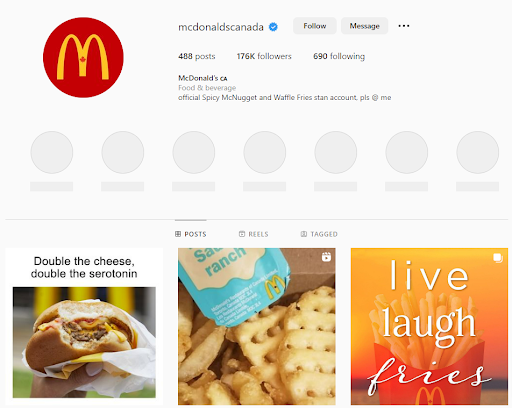
McDonald’s Canada Instagram. Source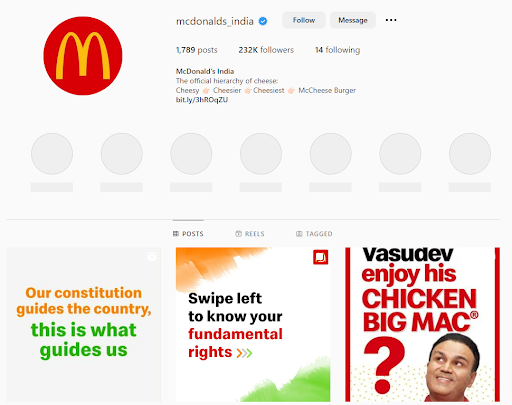
McDonald’s India Instagram. Source
4 steps to localize an e-commerce store
Your e-commerce store localization strategy should include four simple steps:
1. Research the target market and consumer demand
Ensure that there actually is a demand for your product or service in the target market. If there isn't, then localization only wastes time and resources.
Even if there is demand, it's essential to understand what that demand looks like. You need to know what consumers in the target market are looking for and how they’d prefer to purchase your product or service. Only then can you appropriately tailor your localization efforts to meet their needs.
Invest in market research. Conduct consumer surveys, dig into existing customer feedback, and study market trends as well as industry- and region-specific growth to assess this.
2. Localize your digital presence
Localize digital channels such as your websites, help centers, social media accounts, and email marketing campaigns. These channels act as initial touchpoints and play a huge role in conversion.
It also ensures your messaging is consistent regardless of the language or channel. It helps you gain your customer’s trust and increases brand awareness.
Also, investing in international search engine optimization efforts can increase your search presence globally. You can ensure your products are found online by incorporating the right keywords (search terms) in your website.
As customers tend to search using phrases in their local language, incorporating translated/localized terms on your web pages increases their visibility in search engines. When you do this, it helps search engines identify which countries you are targeting and languages you do business in.
3. Localize the complete user experience
After localizing your marketing materials, be sure to optimize the user experience too. Here are a few things you should focus on:
- Shipping and import taxes: Shipping costs and taxes change depending on the sender and receiver location. For instance, countries like India have GST tax requirements. Make sure it’s displayed separately so that the customer isn’t blindsided.

Separate the taxes and duty charges on your checkout page. Source
- Checkout experience: Localize the currency and ensure that region-specific payment methods are available. For instance, countries like Germany prefer Sofort.
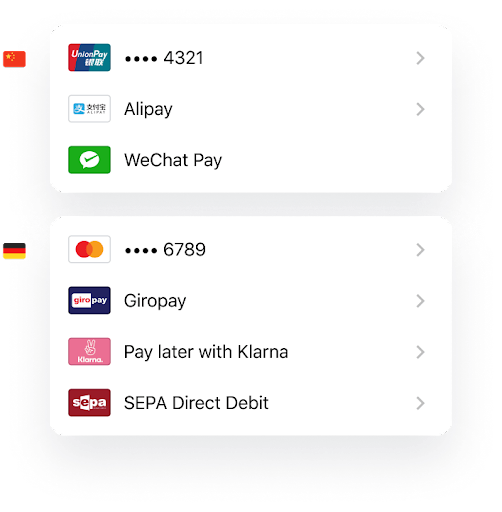
Different payment options between China and Germany. Source
Product personalization: Translate product information, reviews, measurements, etc. Also, offer regionally popular products for a better experience.
Local inventory optimization: Many consumers have gotten used to quick delivery times. So, ensure that the delivery period is accurate and based on real-time inventory levels.
User interface (UI) elements: Optimize elements like call-to-action (CTA) buttons, navigation bar, drop-down lists, menu options, and error messages. Account for text expansion and contraction based on the language translations.
As a Smartling user, your translators can visualize this while translating the text using our Visual Context tool. They can adjust the output based on how it fits on the page, leading to higher quality results.
4. Test, iterate, and finalize
Testing out the localized message ensures everything is accurate. You can A/B test each element and make the necessary adjustments to maximize conversions. Here's what you can check for:
- Translations
- Spellings
- Links
- Payment checkout process
- Product personalization
- Cultural resonance
- On-page engagement
- Placement of UI elements
This doesn't mean that it's a one-time process. You must keep reviewing your analytics and iterating to ensure nothing hampers conversions.
Best practices for e-commerce localization
Here are a few tips to get the most out of the localization process:
Optimize for an excellent mobile user experience
Retail m-commerce (mobile commerce) sales are expected to account for 43.4% of total e-commerce sales in 2023. Consumers use their phones to research products, check prices and offers, try augmented reality experiences, and purchase products. So, tweak the mobile experience to reduce friction and maximize conversions.
Account for cultural and regional nuances
It's not enough to simply translate the store's text. You need to understand linguistic conventions, cultural differences, and regional nuances of customer groups to provide an optimal customer experience.
In terms of linguistic conventions, you need to account for naming conventions, date format, currency format, and more. This ensures your store is culturally relevant and personalized to the customer's preferences.
You can use Smartling’s transcreation tool to help you achieve this. Here, you go beyond translation of words and incorporate style, tone, and intent while translating the words. This is particularly useful for creative copywriting where the intent doesn’t get translated well.
Be mindful of different legal regulations and requirements
Daniel Chabert, CEO & Co-founder of Purple Fire, says, "Companies try to replicate a successful model from one country into another without taking into account any of the legal stipulations that come with it. It can lead to major problems down the line so it's important to thoroughly research each market before launching your product."
Consider consumer protection laws, data privacy regulations, and intellectual property rules. The United States has a taxation requirement called "consumption tax" on e-commerce purchases. So, be sure to consult a local lawyer before localizing your materials.
Localize your e-commerce store with Smartling
You're missing out on a big opportunity if e-commerce localization isn’t an element of your go-to-market strategy. E-commerce localization allows you to expand your reach to new markets, which can lead to increased sales and revenue.
When done right, it also provides a better experience for online shoppers, which can lead to repeat customers and brand loyalty.
Not sure where to start? Smartling can help. We offer machine translation, translation management systems, and localization services to quickly and accurately translate your e-commerce store's content into any language.
Book a demo with us today to learn more about how we can help you localize your e-commerce store for success in global markets.

